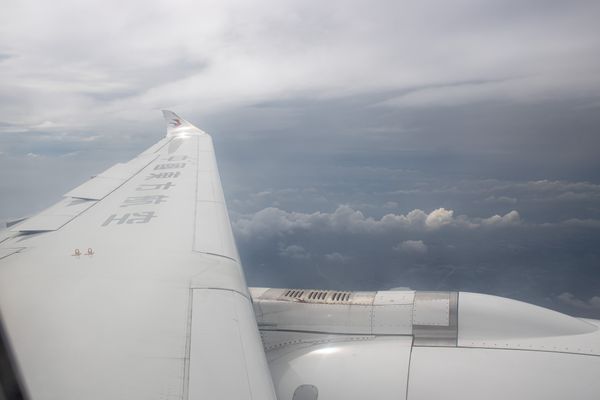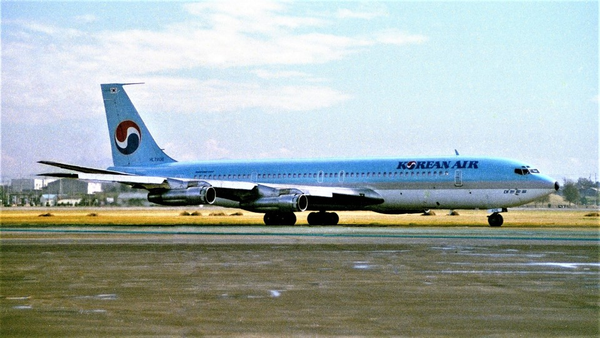The aviation industry is — and has historically been — one of the safest industries in the entire transport sector. Strict safety regulations and new aircraft technology has made flying safer than ever, but some airports consistently throw pilots for a loop when landing due to various factors, from weather conditions to runway length, and most importantly: topography. Some airports have all three challenges, which can create some especially dangerous conditions. This article will break down four of the world's most challenging airports to land at. Please note that this list is subjective and not exhaustive.
1. Lukla, Nepal
Travelers looking to head to Everest Base Camp have long had to deal with one of the scariest airports in aviation: Tenzing-Hillary Airport (LUA) in Lukla, Nepal. Sitting atop the mountainside with one end of the runway coming right up to the town on the side of the mountain and the other end precariously perched atop the cliffside, landing and taking off at Lukla is no easy feat. The airport's runway is only a mere 1729 feet long which, while not the world's shortest, is still short enough to challenge any pilot.
This is not to mention that the approach to the airport often causes more headaches than the short final itself. Pilots landing at Lukla first have to navigate the winding and tricky landscape of the Himalayas which can only be done in perfect weather conditions. Over 50% of scheduled flights to the airport wind up being canceled due to non-perfect weather at the airport. The airport does not have any built-in go-around conditions, meaning that if a plane on final approach for the airport, it has to land regardless of whatever conditions may occur suddenly.
Lukla's dangerous setup has unfortunately led to tragic accidents. More than 50 people have died in incidents at or near the airport. Many flights to Lukla were suddenly met with poor weather conditions, forcing them to rely on visual approaches to land at alternate airports; these approaches tend to not go well.
As a whole, flying in the Himalayas is some of the most dangerous flying in the world, and Lukla is just one of many airports in the region where conditions and pilot training have to be perfect for flights to land successfully.
2. Courchevel, France

Located in Europe is quite possibly the most extreme runway at an airport. Just a mere 1,762 feet — severely limiting the aircraft types that can land — Courchevel Airport (CVF)'s runway features an extremely steep gradient of 18.6% which makes landing aircraft extraordinarily hard. Not to mention that Courchevel Airport is also in an extremely mountainous territory and the runway hovers over a cliffside.
The airport's complexity is made worse by the fact that it sits extremely close to ski runs and large swaths of people who could be in danger if an incident were to occur. Moreover, the airport features no ILS or any lighting aid which makes landing at night or in poor visibility nearly impossible. Given that, and similar to Lukla, flights can really only land at Courchevel in perfect conditions. The airport has seen numerous accidents over the years, but tend to be less severe than Lukla as in the winter aircraft overrunning the airport typically run into a large snow bank.
3. Aspen, USA

While generally safer than the first two, Aspen is still one of the most dangerous airports to land at in North America, and certainly one of the toughest in the United States. Home to numerous commercial flights a day, the Aspen Pitkin County Airport (ASE) faces many similar challenges to its mountainous counterparts in France and Nepal.
The surrounding terrain makes for challenging, weaving, approach where pilots have to navigate tall mountains that interfere with approach pathways. The runway is also closely bound by 14,000-foot-tall mountains on nearly all sides which makes short finals challenging, even for experienced pilots. Unlike Lukla and Courchevel, Aspen's runway is considerably longer at 8,006 feet, but with an elevation of 8,000 feet above sea level, aircraft require much more space to take off and land. Fortunately, runway 15 runs at an upslope which uses gravity to help landing aircraft slow down.
The airport has seen many accidents over the past couple of decades — estimates of more than 40 — although all incidents have been involving private aircraft. The airport sees some of the most commercial traffic of any ski resort town in the U.S., but the commercial airlines have so far avoided enlarging the list of aviation accidents at the airport.
4. Saba, Caribbean Netherlands
While Saba Airport typically sees less accidents than other airports on this list, Juancho E. Yrausquin Airport (SAB) gains fame through having the shortest runway in the world. At only 1,312 feet and barely over 1/5 of a mile, very few planes can actually land and take-off at Saba airport.
The danger is made worse by its maritime location, featuring frequently gusty winds and extreme cliffsides anchoring both ends of the runway. Any plane that lands short or overruns the runway will find itself in deep trouble. Fortunately, there are no known incidents at the airport as the strong winds tend to aid aircraft when landing in a headwind, and the tailwinds help provide aircraft taking-off with desperately needed lift.
These four airports will definitely not be quelling people's fear of flying anytime soon, especially as three of them have seen a noticeable amount of incidents in recent years. The recent January crash in Pokhara, Nepal certainly is illustrative of the dangers in flying in the Himalayas. That said, very few airports are as extreme as these four and usually feature much more landing aid, longer runways, and much easier topography for visual approaches.
However, these extreme airports do require extremely skilled pilots, and it goes without saying that the commercial airlines who fly into Saba, Aspen, and Lukla (Courchevel sees no commercial air service) all equally value safety and care tremendously about ensuring pilot certification. Many of the accidents that occur are weather-related as airlines have managed to perfect landing at these airports in perfect conditions.
GTF Storage Crisis Deepens: 835 Aircraft Grounded as Pratt & Whitney Recalls Surge Post-Mid-Year » KAL858: The North Korean Bombing that Shocked the World » GlobalX Secures Rare Authorisation to Operate Intra-Canada Charter Flights »
Comments (1)
 Saputnik
"the tailwinds help provide aircraft taking-off with desperately needed lift."
I thought aircraft always both land and take off into the wind, with head wind, not tail wind. They need head wind to help them gain lift, as aircraft speed relative to air is higher with head wind than tail wind.
Saputnik
"the tailwinds help provide aircraft taking-off with desperately needed lift."
I thought aircraft always both land and take off into the wind, with head wind, not tail wind. They need head wind to help them gain lift, as aircraft speed relative to air is higher with head wind than tail wind.
Add Your Comment
SHARE
TAGS
INFORMATIONAL Aviation Danger Airports Dangerous Airports Lukla Nepal Saba Netherlands Aspen USA Colorado Courchevel FranceRECENTLY PUBLISHED
 VIDEO: What It's Like Onboard China's COMAC C919
We flew onboard China Eastern's COMAC C919 to experience China's homegrown narrow-body up close. From seat comfort to cabin layout to noise levels to tech: how does it really compare with the Boeing 737 and Airbus A320? This review puts all three workhorses under the same spotlight.
TRIP REPORTS
READ MORE »
VIDEO: What It's Like Onboard China's COMAC C919
We flew onboard China Eastern's COMAC C919 to experience China's homegrown narrow-body up close. From seat comfort to cabin layout to noise levels to tech: how does it really compare with the Boeing 737 and Airbus A320? This review puts all three workhorses under the same spotlight.
TRIP REPORTS
READ MORE »
 KAL858: The North Korean Bombing that Shocked the World
Among the 99 passengers boarding Korean Air Flight 858 on November 29, 1987, few could imagine their journey would end as one of aviation's darkest mysteries.
STORIES
READ MORE »
KAL858: The North Korean Bombing that Shocked the World
Among the 99 passengers boarding Korean Air Flight 858 on November 29, 1987, few could imagine their journey would end as one of aviation's darkest mysteries.
STORIES
READ MORE »
 Ghost Networks: The Rise, Fall, and Revival of Fifth-Freedom Flights
Fifth-freedom flights — routes where an airline flies between two countries outside its home base — have always lived in aviation's twilight zone. We chart their rise, their near-disappearance, and the surprising markets where they still thrive today. Then we take you on board a special Seoul-Tokyo fifth-freedom flight to show how the experience stacks up against a typical regional carrier.
TRIP REPORTS
READ MORE »
Ghost Networks: The Rise, Fall, and Revival of Fifth-Freedom Flights
Fifth-freedom flights — routes where an airline flies between two countries outside its home base — have always lived in aviation's twilight zone. We chart their rise, their near-disappearance, and the surprising markets where they still thrive today. Then we take you on board a special Seoul-Tokyo fifth-freedom flight to show how the experience stacks up against a typical regional carrier.
TRIP REPORTS
READ MORE »


